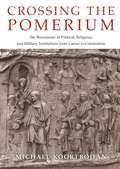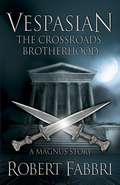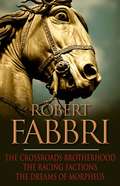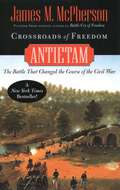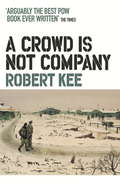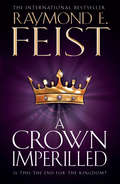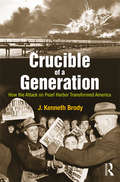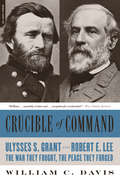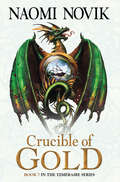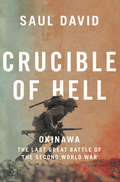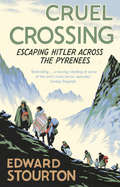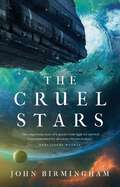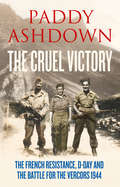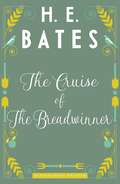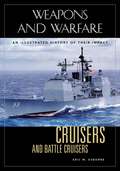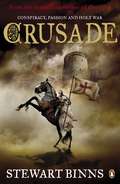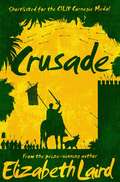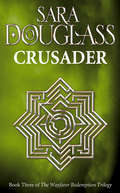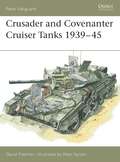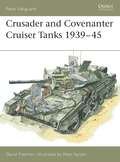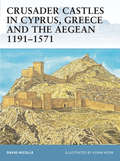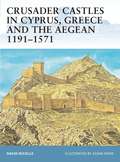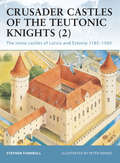- Table View
- List View
Crossing the Pomerium: The Boundaries of Political, Religious, and Military Institutions from Caesar to Constantine
by Michael KoortbojianA multifaceted exploration of the interplay between civic and military life in ancient RomeThe ancient Romans famously distinguished between civic life in Rome and military matters outside the city—a division marked by the pomerium, an abstract religious and legal boundary that was central to the myth of the city's foundation. In this book, Michael Koortbojian explores, by means of images and texts, how the Romans used social practices and public monuments to assert their capital's distinction from its growing empire, to delimit the proper realms of religion and law from those of war and conquest, and to establish and disseminate so many fundamental Roman institutions across three centuries of imperial rule.Crossing the Pomerium probes such topics as the appearance in the city of Romans in armor, whether in representation or in life, the role of religious rites on the battlefield, and the military image of Constantine on the arch built in his name. Throughout, the book reveals how, in these instances and others, the ancient ideology of crossing the pomerium reflects the efforts of Romans not only to live up to the ideals they had inherited, but also to reconceive their past and to validate contemporary practices during a time when Rome enjoyed growing dominance in the Mediterranean world.A masterly reassessment of the evolution of ancient Rome and its customs, Crossing the Pomerium explores a problem faced by generations of Romans—how to leave and return to hallowed city ground in the course of building an empire.
The Crossroads Brotherhood: A Crossroads Brotherhood Novella from the bestselling author of the VESPASIAN series (A Crossroads Brotherhood Novella #1)
by Robert FabbriRome, AD 25: Marcus Salvius Magnus, Patron of the Crossroads Brotherhood, has a problem. In fact, he has two. One of the brothels under his protection has been raided by a rival Brotherhood, and valuable merchandise has been stolen. He can't lose face and let the attack go unpunished, but how can he retaliate without igniting a gang war? At the other end of the social spectrum, Lady Antonia - the emperor's sister-in-law - has let Senator Gaius Vespasius Pollo know that she has a score that only blood will settle, and Magnus owes the Senator a favour. Now, a simple assassination wouldn't be a problem for a man like Magnus, but the instruction is that this death has to be a little more... inventive... than the usual knife-in-the-back-in-a-dark-alley. Perhaps the Patronus of the Crossroads Brotherhood can kill two birds with one stone?A VESPASIAN NOVELLA______________________________________________Don't miss Robert Fabbri's epic new series Alexander's Legacy
The Crossroads Brotherhood Trilogy: From the bestselling author of the VESPASIAN series (The\crossroads Brotherhood Ser. #4)
by Robert FabbriStarring characters from the bestselling Vespasian series, The Crossroads Brotherhood, The Racing Factions and The Dreams of Morpheus delve into Rome's criminal underworld. In each of these exclusive e-novellas, Marcus Salvius Magnus, leader of the Crossroads Brotherhood, must overcome his own problems whilst battling his way through Rome's savage and corrupt political arena.THREE VESPASIAN NOVELLAS______________________________________________Don't miss Robert Fabbri's epic new series Alexander's Legacy
Crossroads of Freedom: Antietam (Pivotal Moments in American History)
by James M. McPhersonThe Battle of Antietam, fought on September 17, 1862, was the bloodiest single day in American history, with more than 6,000 soldiers killed--four times the number lost on D-Day, and twice the number killed in the September 11th terrorist attacks. In Crossroads of Freedom, America's most eminent Civil War historian, James M. McPherson, paints a masterful account of this pivotal battle, the events that led up to it, and its aftermath. As McPherson shows, by September 1862 the survival of the United States was in doubt. The Union had suffered a string of defeats, and Robert E. Lee's army was in Maryland, poised to threaten Washington. The British government was openly talking of recognizing the Confederacy and brokering a peace between North and South. Northern armies and voters were demoralized. And Lincoln had shelved his proposed edict of emancipation months before, waiting for a victory that had not come--that some thought would never come. Both Confederate and Union troops knew the war was at a crossroads, that they were marching toward a decisive battle. It came along the ridges and in the woods and cornfields between Antietam Creek and the Potomac River. Valor, misjudgment, and astonishing coincidence all played a role in the outcome. McPherson vividly describes a day of savage fighting in locales that became forever famous--The Cornfield, the Dunkard Church, the West Woods, and Bloody Lane. Lee's battered army escaped to fight another day, but Antietam was a critical victory for the Union. It restored morale in the North and kept Lincoln's party in control of Congress. It crushed Confederate hopes of British intervention. And it freed Lincoln to deliver the Emancipation Proclamation, which instantly changed the character of the war. McPherson brilliantly weaves these strands of diplomatic, political, and military history into a compact, swift-moving narrative that shows why America's bloodiest day is, indeed, a turning point in our history.
A Crowd Is Not Company (Phoenix Press Ser.)
by Robert KeeJournalist and broadcaster Robert Kee was an RAF bomber pilot in the Second World War. When his plane was shot down over Nazi-occupied Holland, he was captured and spent three years and three months in a German POW camp. From the beginning he was intent on escape. After several false starts, he finally made it. First published in 1947 as a novel, but now revealed to be an autobiography, A Crowd Is Not Company recounts Kee's experiences as a prisoner of war and describes in compelling detail his desperate journey across Poland - a journey that meant running the gauntlet of Nazism.
A Crown Imperilled: Book Two Of The Chaoswar Saga (The Chaoswar Saga #2)
by Raymond E. FeistThe penultimate volume of the mighty Riftwar Cycle
Crucial Intercept
by Don PendletonA series of high-profile shootings in Virginia exposes a deadly scavenger hunt with numerous factions competing for the prize. An ex-CIA cryptologist who created an unbreakable code has unwittingly been sold out to the terrorist group who can get to him first.
Crucible of a Generation: How the Attack on Pearl Harbor Transformed America
by J. Kenneth BrodyCrucible of a Generation tells the story of the fifteen days surrounding the Japanese attack on Pearl Harbor through the pages of eight leading American newspapers. Focusing on publications such as The New York Times and the Chicago Tribune, J. Kenneth Brody paints a vivid picture of U.S. political culture and society at a pivotal moment in the nation's history. Brody considers the papers in full, from headlines to "help wanted" ads, in a text richly illustrated with archival images, wartime posters, and editorial cartoons. The book provides a compelling snapshot of the United States and the role of the media at a time of dramatic tension and global change.
Crucible of a Generation: How the Attack on Pearl Harbor Transformed America
by J. Kenneth BrodyCrucible of a Generation tells the story of the fifteen days surrounding the Japanese attack on Pearl Harbor through the pages of eight leading American newspapers. Focusing on publications such as The New York Times and the Chicago Tribune, J. Kenneth Brody paints a vivid picture of U.S. political culture and society at a pivotal moment in the nation's history. Brody considers the papers in full, from headlines to "help wanted" ads, in a text richly illustrated with archival images, wartime posters, and editorial cartoons. The book provides a compelling snapshot of the United States and the role of the media at a time of dramatic tension and global change.
Crucible of Command: Ulysses S. Grant and Robert E. Lee--The War They Fought, the Peace They Forged
by William C. DavisA dual biography and a fresh approach to the always compelling subject of these two iconic leaders-how they fashioned a distinctly American war, and a lasting peace, that fundamentally changed our nation
Crucible of Gold (The Temeraire Series #7)
by Naomi NovikNaomi Novik’s stunning series of novels follow the global adventures of Captain William Laurence and his fighting dragon Temeraire as they are thrown together to fight for Britain during the turbulent time of the Napoleonic Wars.
Crucible of Hell: Okinawa - Stalingrad Of The Pacific
by Saul David‘Excellent’ Antony Beevor From award-winning historian Saul David, an action-packed and powerful new narrative of the Battle of Okinawa – the last great clash of the Second World War, and one that had profound consequences for the modern world.
Cruel Crossing: Escaping Hitler Across the Pyrenees
by Edward StourtonThe mountain paths are as treacherous as they are steep – the more so in the dark and in winter. Even for the fit the journey is a formidable challenge. Hundreds of those who climbed through the Pyrenees during the Second World War were malnourished and exhausted after weeks on the run hiding in barns and attics. Many never even reached the Spanish border. Today their bravery and endurance is commemorated each July by a trek along the Chemin de la Liberté – the toughest and most dangerous of wartime routes. From his fellow pilgrims Edward Stourton uncovers stories of midnight scrambles across rooftops and drops from speeding trains; burning Lancasters, doomed love affairs, horrific murder and astonishing heroism. The lives of the men, women and children who were drawn by the war to the Pyrenees often read as breathtakingly exciting adventure, but they were led against a background of intense fear, mounting persecution and appalling risk. Drawing on interviews with the few remaining survivors and the families of those who were there, Edward Stourton’s vivid history of this little-known aspect of the Second World War is shocking, dramatic and intensely moving.
The Cruel Stars (The Cruel Stars Trilogy #1)
by John BirminghamWith a ruthless sect of humanity intent on wiping out their species, five intrepid heroes must think like their enemies in this epic SF adventure.They thought the Sturm were dead. They were wrong.Centuries after their defeat, the enemy has returned with an overwhelming attack on the fringes of human space. On the brink of annihilation, humankind's only hope is a few brave souls who survived the initial onslaught: Commander Lucinda Hardy, commander of the Royal Armadalen Navy's only surviving warship; Booker3, a soldier of Earth, sentenced to die for treason; Alessia, a young royal forced to flee when her home planet is overrun and her entire family executed; Sephina L'trel, the leader of an outlaw band. And, finally, retired Admiral Frazer McLennan, the infamous hero of the first war with the Sturm, who hopes to rout his old foes once and for all – or die trying. These five flawed, reluctant heroes must band together to prevail against a relentless enemy and near-impossible odds. For if they fail, the future itself is doomed.
The Cruel Victory: The French Resistance And The Battle For The Vercors 1944
by Paddy AshdownFrom the bestselling and prize-winning author of ‘A Brilliant Little Operation’ comes the long neglected D-Day story of the largest action by the French Resistance during WWII, published to coincide with the 70th anniversary of the Normandy landings.
The Cruise of The Breadwinner
by H. E. BatesThe Cruise of the Breadwinner is an adventure at sea, following Snowy as he comes of age through a shower of sea-spray and bullets. The youngest crew member on a coastal patrol boat, he longs for action as his sharp eyes pick out distant plane battles and his ears strain to the sound of faint gun-fire. But when finally the war envelops him and his crew-mates in its terrible grasp, he must face the realities of pain, fear, and death. Rescuing two downed pilots, one English and one German, the humanity of the enemy and the true cost of war become all too clear. Here Bates exhibits his staggering ability to write character, building an exhilarating tension on board with the dynamic between the grumbling yet skilful engine operator, the wide eyed enthusiasm of Snowy, and the rotund, clumsily tender Captain. We witness the impact of war's heroics and futility on the boat and the boy during a short, violent voyage off the coast of England, told with such fluency and lightness of touch that it is a tale of action as well as beauty. The New York Times said that Bates "painted it all with a loose, sure brush that does not waste a stroke.†?
Cruisers and Battle Cruisers: An Illustrated History of Their Impact (Weapons and Warfare)
by Eric W. OsborneFast cruisers, the eyes of the fleet, were the standard-bearers of empire, the ultimate warships of gunboat diplomacy—no other vessel class was so well equipped to serve as both a working war machine and a projection of national might.Cruisers and Battle Cruisers explores the pivotal importance of cruiser-class ships to naval warfare and, in a wider scope, world politics. In vivid but accessible detail, it describes the milestones of cruiser design and deployment from mid-19th century development of steam-propelled, ironclads to the World War I introduction of battle cruisers; from the decisive naval engagements of World War II and the addition of missiles and computerized systems to the most recent developments.Readers will see how specific technological changes progressively increased the destructive power of cruisers and altered their combat roles, how design innovations altered the quality of life aboard ship, and how cruisers came to be called upon to serve a variety of noncombat roles in war and peace.
Crusade (The Making of England Quartet #2)
by Stewart Binns1072 - England is firmly under the heel of its new Norman rulers. The few survivors of the English resistance look to Edgar the Atheling, the rightful heir to the English throne, to overthrow William the Conqueror. Years of intrigue and vicious civil war follow: brother against brother, family against family, friend against friend.In the face of chaos and death, Edgar and his allies form a secret brotherhood, pledging to fight for justice and freedom wherever they are denied. But soon they are called to fight for an even greater cause: the plight of the Holy Land. Embarking on the epic First Crusade to recapture Jerusalem, together they will participate in some of the cruellest battles the world has ever known, the savage Siege of Antioch and the brutal Fall of Jerusalem, and together they will fight to the death.
Crusade
by Elizabeth LairdCrusade is a richly detailed historical adventure, from Carnegie shortlisted author, Elizabeth Laird.Two boys. Two faiths. One unholy war . . .When Adam's mother dies unconfessed, he pledges to save her soul with dust from the Holy Land. Employed as a dog-boy for the local knight, Adam grabs the chance to join the Crusade to reclaim Jerusalem. He burns with determination to strike down the infidel enemy . . .Salim, a merchant's son, is leading an uneventful life in the port of Acre - until news arrives that a Crusader attack is imminent. To keep Salim safe, his father buys him an apprenticeship with an esteemed, travelling doctor. But Salim's employment leads him to the heart of Sultan Saladin's camp - and into battle against the barbaric and unholy invaders . . .
Crusader: Wayfarer Redemption, Enchanter, Starman, Sinner, Pilgrim, Crusader (Wayfarer Redemption Ser. #6)
by Sara DouglassThe last book of the Wayfarerer Redemption, an enthralling continuation of The Axis trilogy, by the bestselling Australian author Sara Douglass
Crusader and Covenanter Cruiser Tanks 1939–45 (New Vanguard)
by Peter Sarson David FletcherThe Covenanter (which never saw active service) and Crusader Cruiser tanks were developed between 1939 and 1940. The Crusader first saw action in the North African desert in June 1941: its speed and sleek design made it a hard target to hit, and the tank was well-respected by the Afrikakorps for its velocity in combat. But its hurried development prior to World War II also made it prone to mechanical failure. This book examines the Covenanter and the many variants of the Crusader tank, detailing the designs, developments and disappointments of these infamous World War II tanks.
Crusader and Covenanter Cruiser Tanks 1939–45 (New Vanguard #Vol. 14)
by Peter Sarson David FletcherThe Covenanter (which never saw active service) and Crusader Cruiser tanks were developed between 1939 and 1940. The Crusader first saw action in the North African desert in June 1941: its speed and sleek design made it a hard target to hit, and the tank was well-respected by the Afrikakorps for its velocity in combat. But its hurried development prior to World War II also made it prone to mechanical failure. This book examines the Covenanter and the many variants of the Crusader tank, detailing the designs, developments and disappointments of these infamous World War II tanks.
Crusader Castles in Cyprus, Greece and the Aegean 1191–1571 (Fortress #59)
by Mr Adam Hook Dr David NicolleThe castles built by the Crusaders, Hospitallers, Venetians and Genoese in Cyprus, Greece, the Aegean, and on the Black Sea served to defend against a complex array of constantly changing threats: Mamluks, Catalan mercenaries, Ottoman Turks, Byzantines, independent Islamic states, Timur-i-Lenk, and widespread piracy, to name but few. The resulting fortifications some inherited from conquered the territories of the former Byzantine empire, some built from scratch were very different to those found in the Middle East. This superbly illustrated book explores their design, development and fate in detail, documenting the rich architectural heritage of this region and its complex history.
Crusader Castles in Cyprus, Greece and the Aegean 1191–1571 (Fortress)
by David Nicolle Adam HookThe castles built by the Crusaders, Hospitallers, Venetians and Genoese in Cyprus, Greece, the Aegean, and on the Black Sea served to defend against a complex array of constantly changing threats: Mamluks, Catalan mercenaries, Ottoman Turks, Byzantines, independent Islamic states, Timur-i-Lenk, and widespread piracy, to name but few. The resulting fortifications some inherited from conquered the territories of the former Byzantine empire, some built from scratch were very different to those found in the Middle East. This superbly illustrated book explores their design, development and fate in detail, documenting the rich architectural heritage of this region and its complex history.
Crusader Castles of the Teutonic Knights: The stone castles of Latvia and Estonia 1185–1560 (Fortress #19)
by Peter Dennis Dr Stephen TurnbullALSO AVAILABLE TO BUY AS AN E-BOOK. The original forced conversion of pagan Livonia, what is now the Baltic states of Latvia and Estonia, was carried out by a military order known as the Brethren of the Sword. In 1236 this order was incorporated into the Teutonic Knights following a catastrophic military defeat. The knights had always consolidated their conquests through networks of castles and fortified places, and the Livonian Chapter of the Teutonic Order built castles of stone. This title covers the developmental and operational history of these fortresses over the length of the Middle Ages. It details how the Baltic fortifications of the Teutonic Knights evolved to reflect the changing nature of siege warfare and the increasing dominance of gunpowder in warfare.
